As I’ve been talking about Wars Across the World’s moreishness, fascinating themes, and disappointing AI for over six years, you’d think I wouldn’t have waited until July, 2023 to try multiplayer for the first time. For the past week myself and Gobser, a willing Cornerite, have been PBEMing the Battle of the Bulge, a starter scenario I invariably win when playing the CPU.
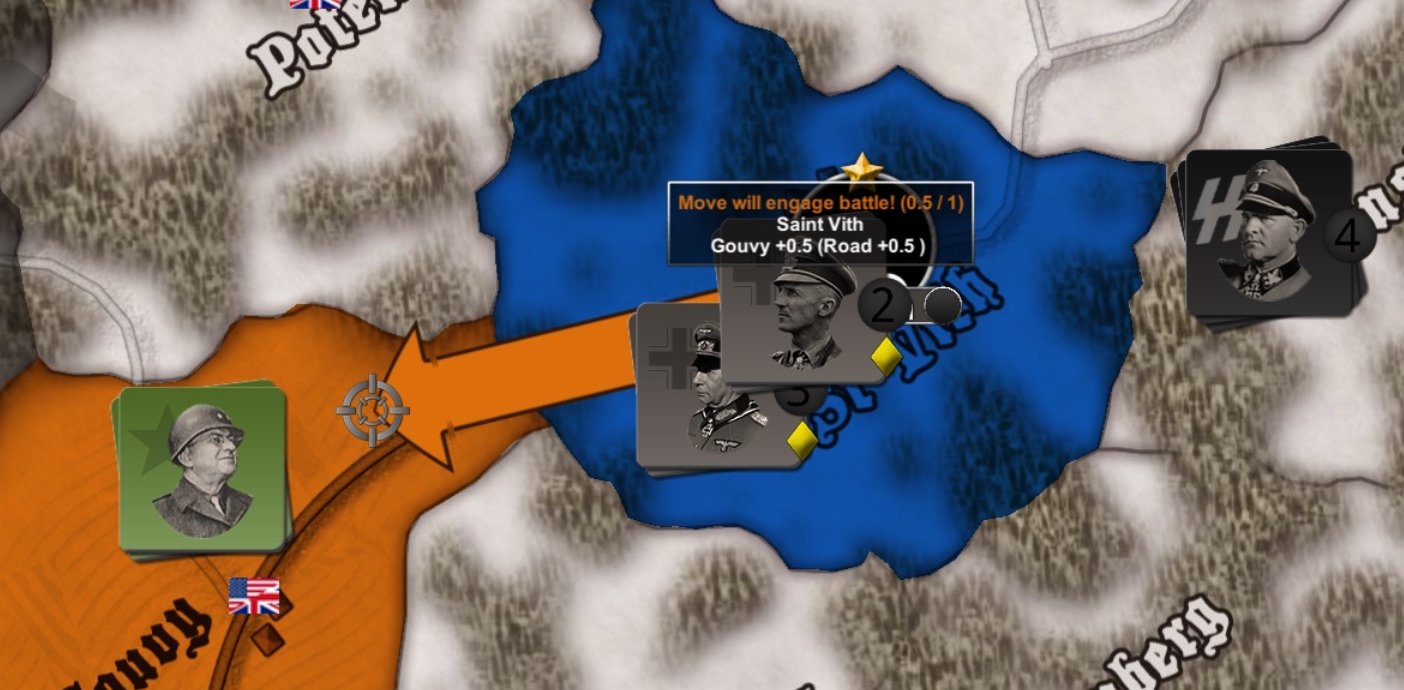
Although we’ve only played half of its eighteen turns, a historical outcome is looking increasingly likely. My westward thrust through the snow-clogged Ardennes (I’m playing as the Germans) started hearteningly. Hastily whitewashed Panzers were roaming Saint Vith and Wiltz within a couple of turns of the start.
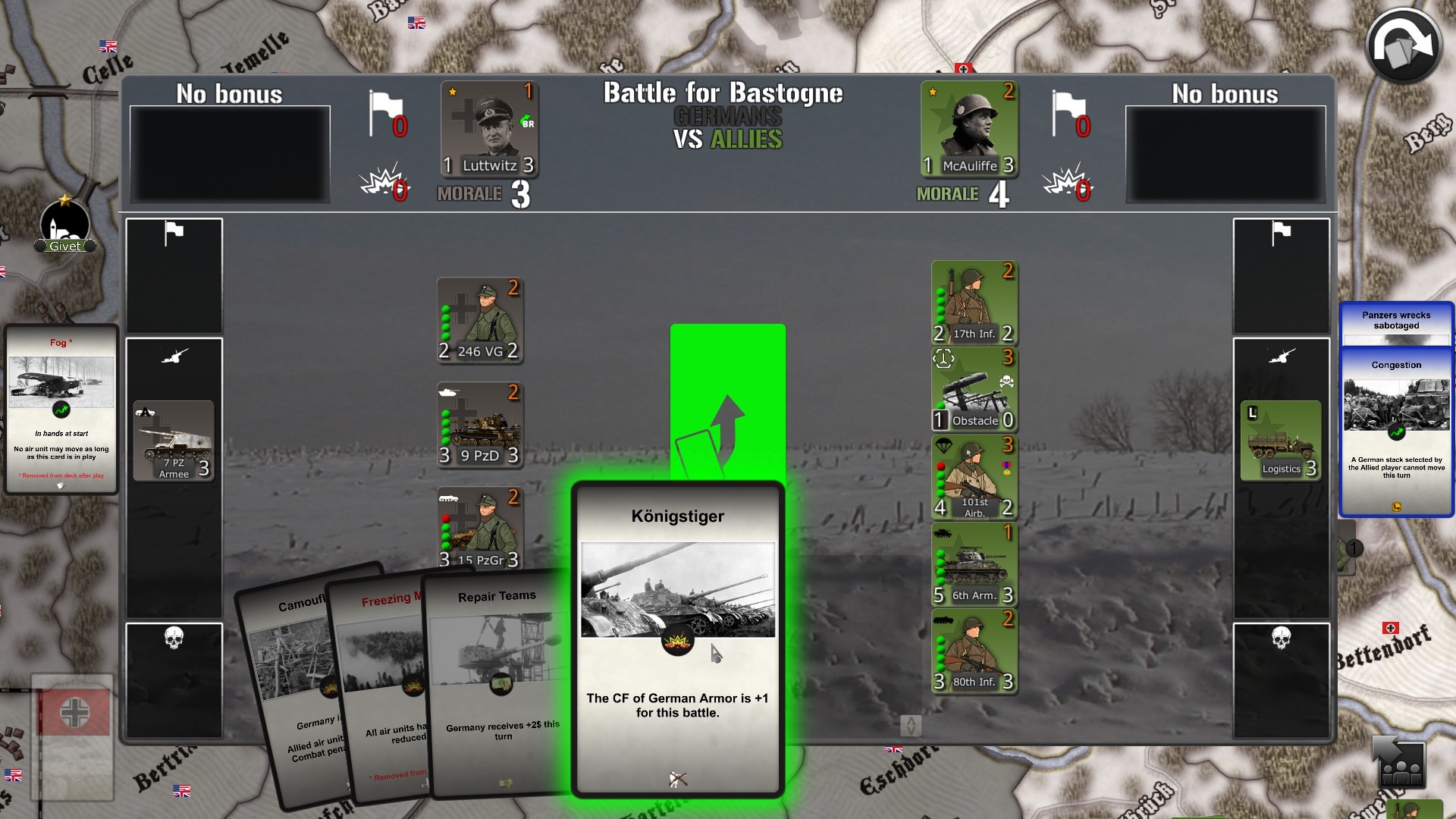
After two attempts to take Bastogne failed, Axis forces surged past the stubborn town. Perhaps the victory locations on the map’s lefthand edge – Dinant, Givet, Namur… – would put up less of a fight and I’d turn my attention back to General McAuliffe’s stronghold once it had endured a turn or two of supply starvation.
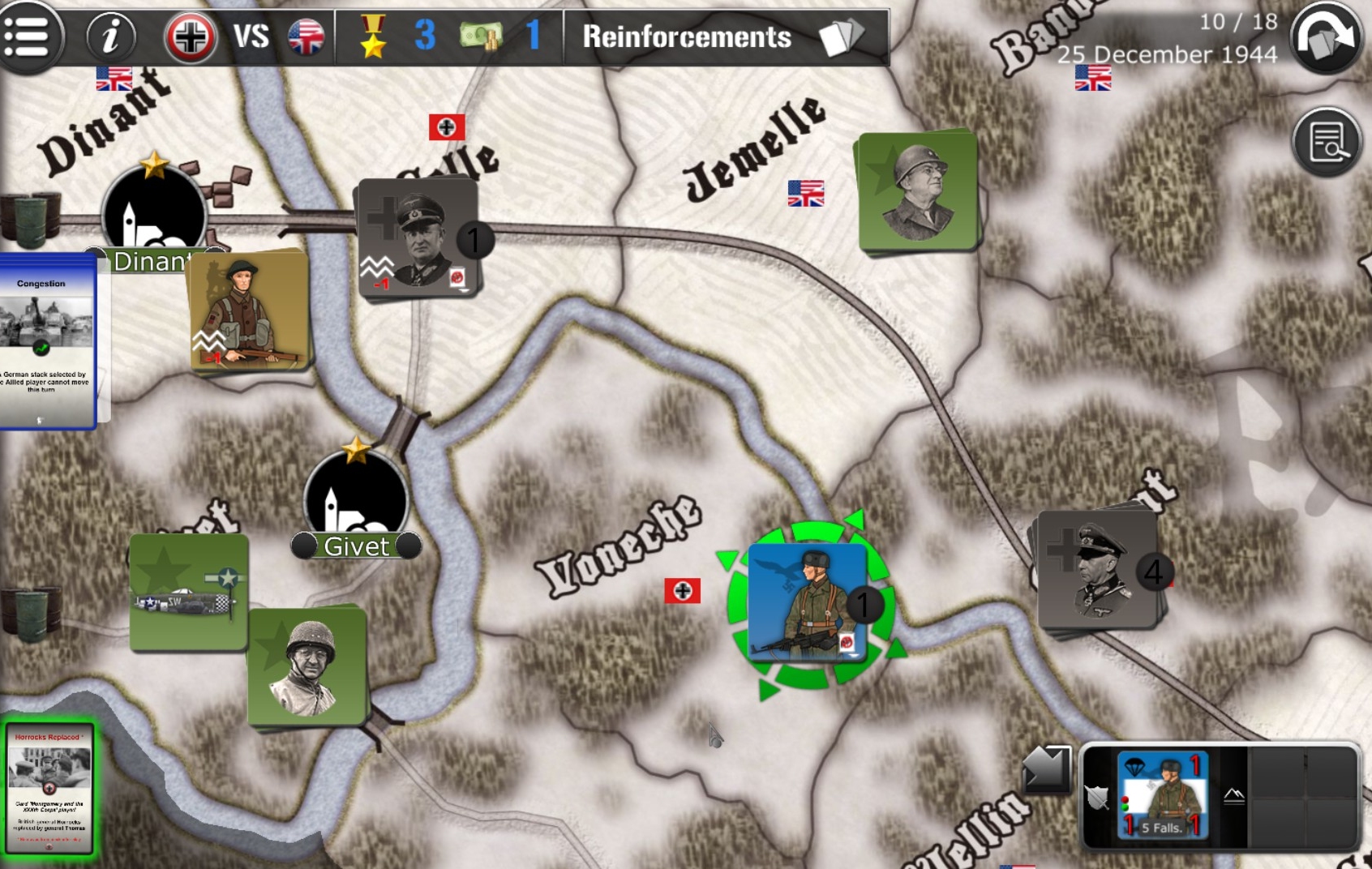
A lone Fallschirmjäger counter occupied Givet on turn 8, but, the tip of an increasingly over-extended spear, it wasn’t long before it was evicted. Currently, I’m striving to save said paratroopers and the Kampfgruppe that tried and failed to reach them. With the pressure on my flanks and forward units growing with each passing turn, my hopes of shoving the Allies off the map are fading fast. Retreat and consolidation seems far more sensible right now than offensive action.
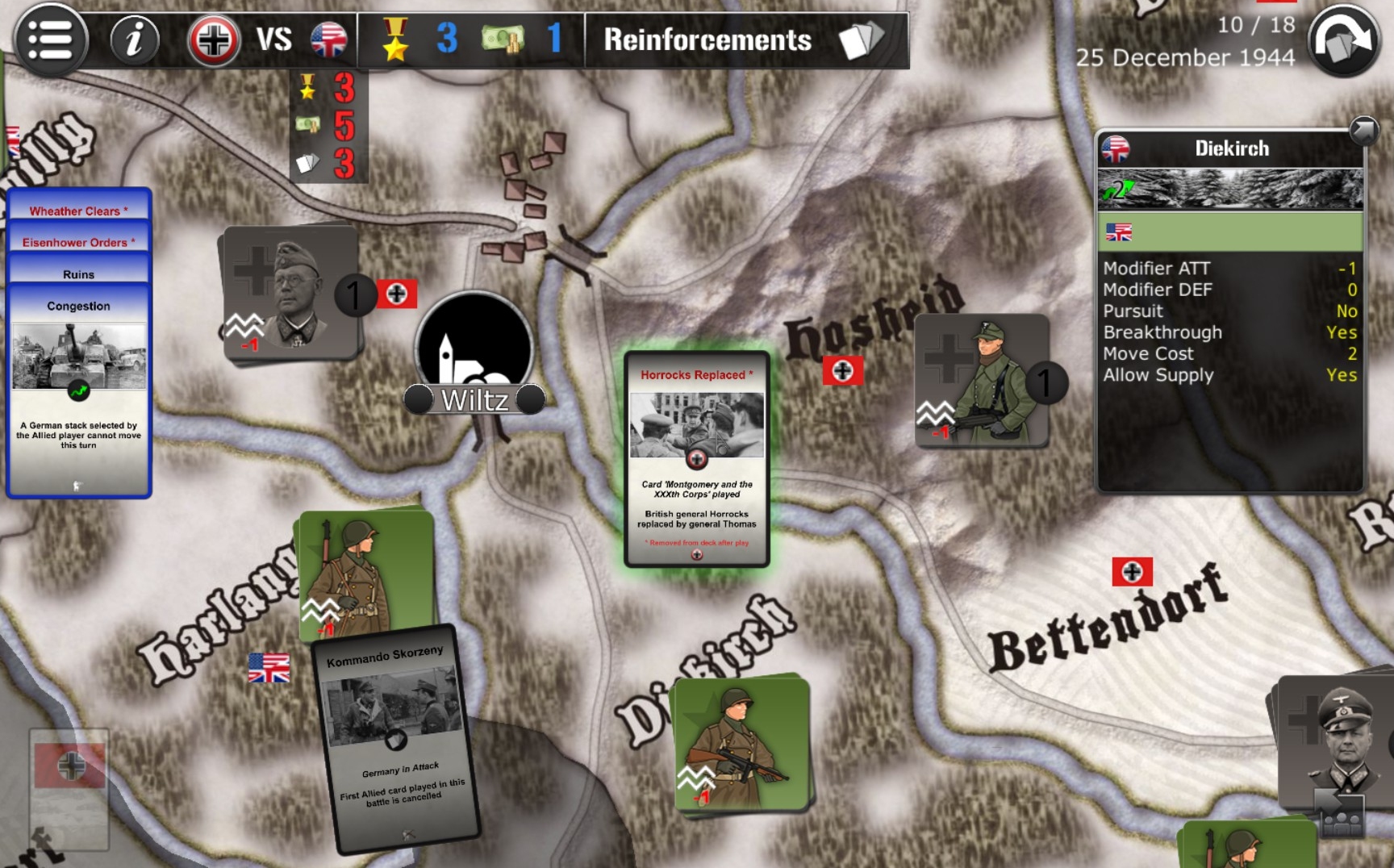
Looking back, I probably didn’t take full advantage of my huge armour advantage in the scenario’s early phases. Failing to neutralise threats on the Elsenborn Ridge and south of Wiltz meant I’ve had to picket my lengthening flanks almost from the outset. Units that might have helped me encircle Bastogne, hold Givet, and take Dinant, have instead spent their time peering across snowy valleys at green counter stacks too sizeable to ignore.
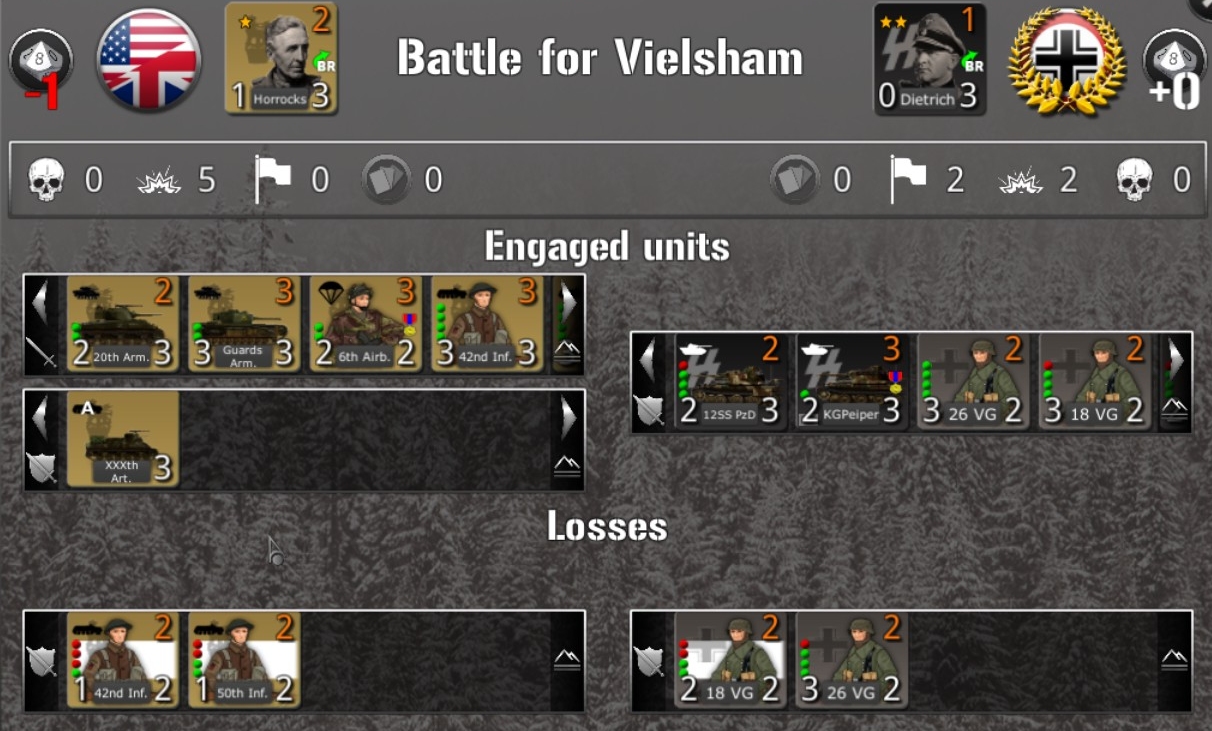
Although PBEM WATW has its quirks – the most disagreeable of which is probably the player’s inability to choose combat cards during the enemy half of the turn (the flawed AI does it for you) – I’m thoroughly enjoying its challenges, novelty, and convenience. As a turn’s worth of counter choreography in a modest WATW scenario probably doesn’t take longer than ten minutes, it’s a great way to inject a dash of colourful wargaming into even the busiest day.

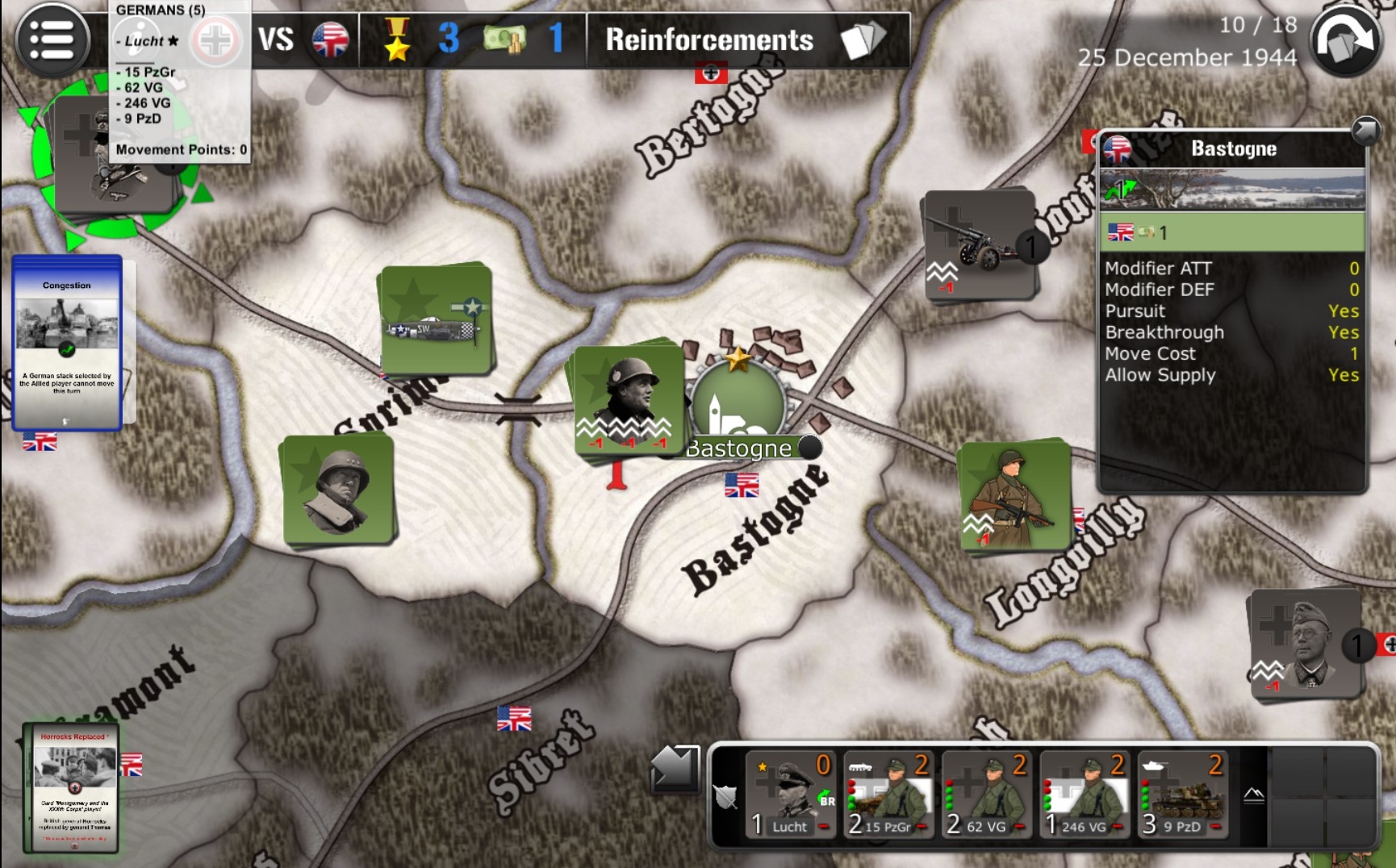
If I might add some of impressions of my own:
Multiplayer really makes the system that supports incomplete information about your opponent’s forces and capabilities shine. Not many games make you second guess your options this much and I don’t really remember any game that put so much emphasis on recon-in-force. Partly it is due to how quickly things shift in this game, partly due to very impactful short-term decision making.
I must also mention that I enjoy the issues of diverse “densities” of forces, with which you can only guess an approximation of the enemy numbers in any given area at a time, combined with the fact that most of the time you can’t be sure these forces’ precise composition.
Speaking of decision making and knowledge, once you know the enemy forces, while their capabilities are easily legible, combat is by no means predictable. Add the dramatic yet understandable effects of the combat locales, obstacles and entrenchment to the mix and you get the cocktail that rewards good ideas greatly while still stopping you one pace short of confidence in the best scenario and praying for a lucky break in the 50/50 situations. I must say I don’t think I’ve ever experienced such, dare I say, realistic emotional pressure from a historical wargame, except maybe FoG2.
And the cards! How many casualties were inflicted by a timely deployment of a card? A single card may reverse the force balance completely. Some of them require a whole other level of decision making, like “do I really want a good general and a few tank units to enter the fray, but to pay with VP? Am I really sure that the difference this card would make will pay for the operation-wide problem that it will most definitely cause?” Sure, not every card is as impactful, but most of them have enough bite to them to feel very meaningful.
But DISCLAIMER: All of the above does not work well in singleplayer, and the game is both buggy and very quirky. I am glad we were able to overcome the quirks and that in this case bugs are not too much of an issue (I’ve noticed only a single bug, where a card refused to do what it promised to do in the description), but I think that a potential buyer should be aware of these issues.
For quite some time I was able to substitute multiplayer by playing hotseat against myself but I think it is safe to say that I am bonkers and this is not an universal way people can enjoy this game without a human opponent handy.
I’ve had a lot of fun with https://store.steampowered.com/app/365560/Battle_of_the_Bulge/
by John Butterfield, usually £3.50 on sale.
Currently trying to get the hang of https://store.steampowered.com/app/2167010/WinterThunder/
Interesting design by Brian Train.
Both recommended
>> I’ve had a lot of fun with Battle_of_the_Bulge by John Butterfield
Me too. It’s a pity we only got one sequel.
>> Currently trying to get the hang of Winter Thunder. Interesting design by Brian Train.
I’ve bounced off Winter Thunder a couple of times. If there’s a great game lurking beneath that somewhat unfriendly exterior, please let us know.
Yet another Bulge game here to add to the mix; Bastogne Breakout.
https://bruinbeargames.itch.io/bastogne-breakout
When I saw the word “Breakout”, I couldn’t help thinking of those arcade games from the 70s / 80s where you break down a virtual brick wall by bouncing a moving widget off it. Good times. I am sure the above game is more sophisticated than that.